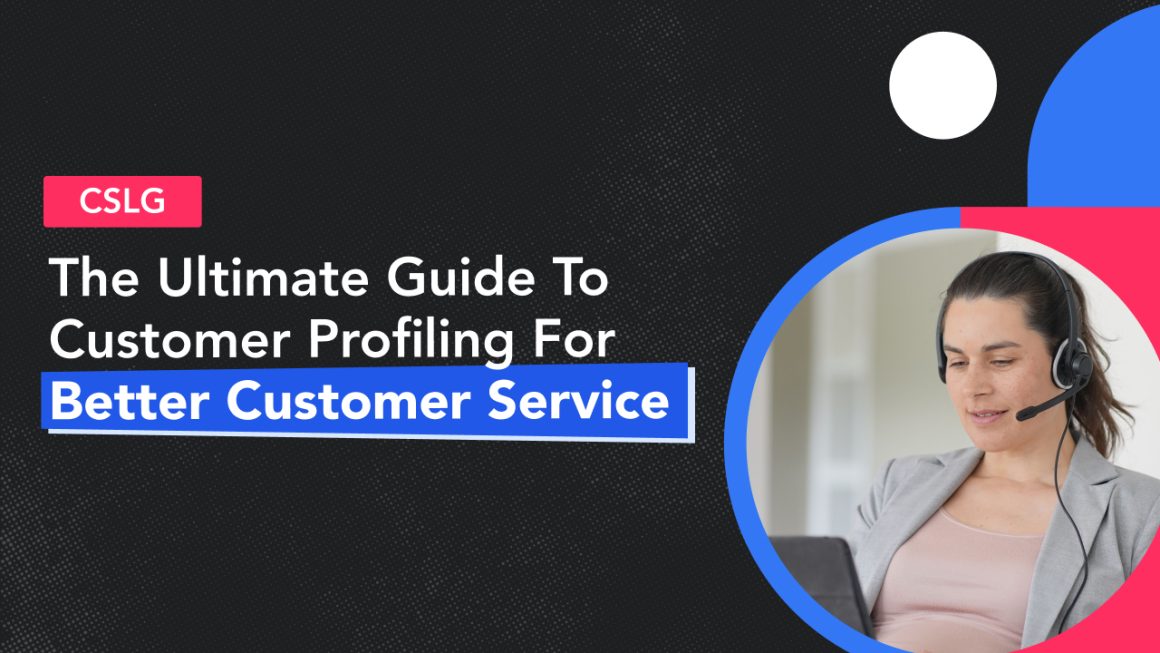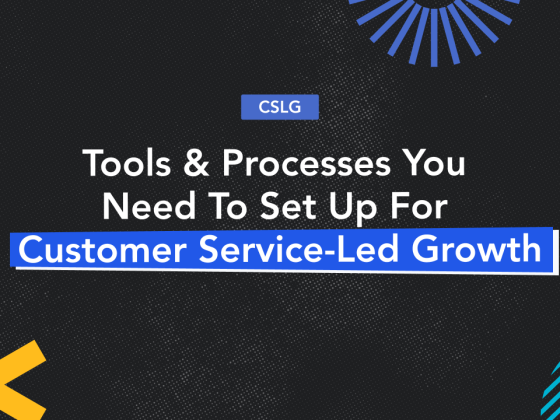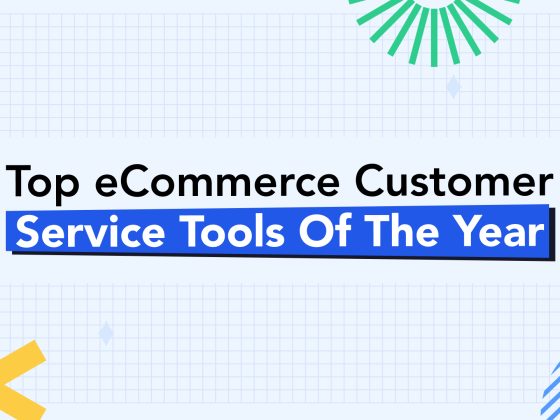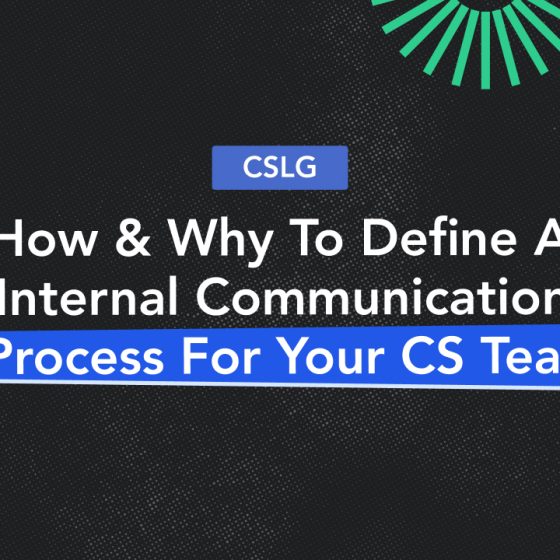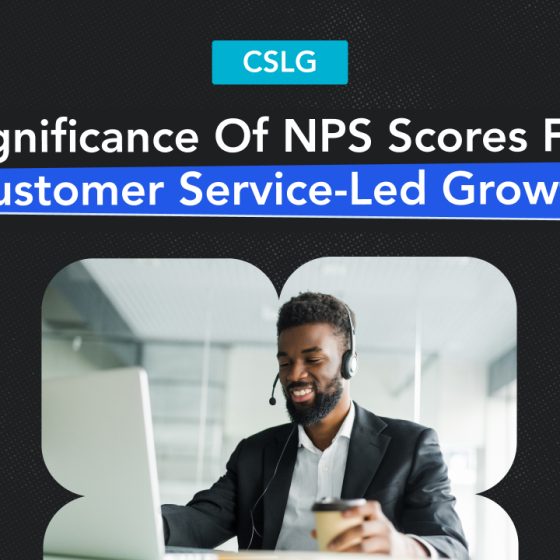According to a study by Salesforce, 84% of customers say the company’s experience is just as important as its products and services.
Companies like Amazon, which has built its entire business around customer service, have seen massive success in terms of growth and customer loyalty. Clearly, in 2023, customer service-led growth is the way of the future.
One of the tools that will help you achieve retention-based growth is customer profiling.
Without a customer profile, businesses plunge into uncertainty, wasting resources on misguided efforts, losing their competitive edge, and falling victim to the success of their more informed competitors.
But where do you start? What information should you be collecting? And how do you use it to create a compelling customer profile?
Don’t worry; we’ve got you covered! In this article, we’ll dive into different strategies and techniques for building an effective customer profile so that you can take your customer service-led growth to the next level.
So, grab a cup of coffee, put on your thinking cap, and let’s get profiling!
What is a Customer Profile?
All right, imagine you’re trying to bake the perfect cake. You need to know what ingredients to use, how much of each to add, and how long to bake it for, right? Similarly, customer profiling is like creating a recipe for the perfect customer service experience.
A customer profile is a detailed description of a customer that helps businesses understand their needs, preferences, behaviors, and characteristics. It involves collecting and analyzing customer data to gain insights that can inform business decisions and help improve customer service.
So, what kind of information is included in a customer profile? Well, it can vary depending on your business and industry, but typically it includes things like:
- Demographic information (age, gender, income, education)
- Psychographic information (values, attitudes, personality, lifestyle)
- Behavioral information (buying habits, preferences, purchase history)
- Needs and pain points (problems, challenges, goals, aspirations)
Why is customer profiling important?
Picture this: you’re driving blindfolded. Scary, right?
That’s precisely what it’s like for businesses that don’t do customer profiling. Without understanding who your customers are and what they want, you’re essentially driving your business without a clear direction.
But fear not, because customer profiling can be the GPS that guides you towards success.
Here are four reasons why customer profiling is so crucial for businesses to practice customer service-led growth:
01. Avoid Losing Customers
If you don’t understand your customers’ needs and preferences, you risk losing them to competitors who do. By creating a customer profile, you can better understand what your customers want and make sure you provide it to them. Otherwise, they may look elsewhere for a better customer service experience.
02. Increase Customer Loyalty
By providing a personalized customer service experience, you can create a strong bond with your customers. This can lead to increased loyalty and repeat business. Customers who feel understood and valued are more likely to stick around and even recommend your business to others.
For example, a beauty brand that profiles its customers may find that a segment of its audience is particularly interested in cruelty-free products. The brand can then focus on promoting its cruelty-free offerings to that segment, thereby increasing the likelihood that those customers will remain loyal.
03. Improve Efficiency
Customer profiling can help you streamline your business operations. By understanding your customer’s needs and preferences, you can focus your resources on the areas that matter most. This can help you save time and money while providing top-notch customer service.
For instance, an online retailer that profiles its customers may find that a significant portion of its audience prefers to shop using mobile devices. The retailer can then optimize its mobile website to serve that segment better, reducing the need for costly desktop website updates and improvements.
04. Drive Growth
Ultimately, customer profiling can help you grow your business. By providing exceptional customer service, you can attract new customers, increase customer retention, and increase sales. Happy customers are more likely to become brand advocates, spreading the word about your business and helping to drive growth.
05. Enhancing Customer Experience in 2023
Customer profiling enables you to offer personalized experiences to your customers, which can lead to increased customer satisfaction and loyalty—leading to enhanced customer experience in 2023.
For example, a hotel chain that profiles its customers may find that a segment of its audience is interested in outdoor activities. The hotel can then offer personalized itineraries and recommendations for outdoor activities in the surrounding area, improving the overall customer experience and increasing the likelihood of repeat business.
Factors to consider while building a customer profile
You can’t just build a customer profile based on anything and everything about the customer, right? Here are the factors to consider when making an effective customer profile.
01. Products/Services used
Understanding what products or services your customer uses is crucial in building a customer profile for better customer service-led growth. It can help you know what your customer values, what they’re looking for, and where they may have unmet needs.
You can better serve your customers and differentiate yourself from competitors who may not meet this need. For example, if you run a fitness app and notice that many of your customers use the “yoga” feature, you might want to invest more resources into expanding your yoga content.
02. Demographics
Next, we have demographics. This includes information such as age, gender, location, income, and education. Demographics can help you understand your customer’s identity and what they might be looking for—essential for customer growth and retention.
By understanding your customer demographic, you can better tailor your marketing and customer support strategies like understanding in which time zones customers are and allocating the resources accordingly.
03. Customer Benefits
Moving on to customer benefits, it is all about understanding the benefits that your customers are getting from your product or service is important for two reasons.
First, it can help you understand why your customers are buying from you in the first place.
Second, it can help you differentiate your product from competitors.
For example, if you’re selling a software tool for project management, you might find that your customers primarily use it to save time and increase productivity. This can help you focus on marketing the benefits of your tool that align with these goals. As a bonus, you can also talk about these benefits in support and sales calls.
04. Customer Pain Points
When building a customer profile, understanding your customers’ challenges can help you make a product or service that better meets their needs. You can improve your product or service to serve your customers better and increase customer loyalty.
For example, if you’re running a restaurant and notice that many of your customers are complaining about the wait time for their food, on top of that they cannot reach you from their preferred touchpoint. It would be the most frustrating thing ever. As a result you might want to invest in offering omnichannel support.
Customer Profiling Strategies
We know you’re almost ready to build customer profiles for your customer-led growth needs. We have narrowed the variety of consumer profiling strategies down to the top three.
Buckle up because we’ve got the profiling strategies to make even the most introverted customers reveal their deepest secrets (okay, maybe not that extreme, but you get the idea).
01. Psychographic strategy
Now, we know it sounds like we’re about to analyze your customers’ brains but hear us out.
The psychographic strategy is about understanding customers’ personalities, values, and lifestyles. It’s like getting to know your customers on a deeper level but without the awkward first date small talk.
This method of customer profiling can help you understand what motivates your customers to buy and how they make purchasing decisions.
What’s special about it: What’s unique about the psychographic strategy is that it focuses on understanding customers deeper, beyond just their demographics or buying behavior. By building your customer profiles based on this strategy, you can tailor your customer service and support to your customer’s values and preferences and create more personalized experiences.
To use the psychographic strategy for customer profiling, you’ll need to collect data on your customers’ personality traits, values, interests, and lifestyles. This can be done through surveys, focus groups, and other market research methods. Once you have this data, you can create customer segments based on shared psychographic traits and get ready to rock customer service-led growth!
02. Consumer typology method
The consumer typology method of customer profiling is like a giant puzzle with different pieces representing your customers’ behavior and attitudes. By carefully analyzing each piece, you can see patterns and group similar pieces together to form a complete picture of your customers.
The consumer typology method categorizes customers into different groups based on their behavior and attitudes toward your product or service. This method of customer profiling can help you understand the different types of customers you serve and tailor your customer service and support accordingly.
What’s unique about the consumer typology method is that it focuses on understanding customers’ buying behavior and attitudes towards your product or service.
To use the consumer typology method for customer profiling, you must analyze customers’ behavior and attitudes toward your product or service. This can be done by analyzing data on purchase history, customer feedback, and other sources.
03. Consumer characteristics strategy
The consumer characteristics strategy categorizes customers based on demographic characteristics such as age, gender, income, education, and geographic location.
What’s different about the consumer characteristics strategy is that it helps you understand customers based on demographic characteristics, which can help create targeted marketing campaigns and customer service offerings.
To use the consumer characteristics strategy for customer profiling, you’ll need to gather data on your customers’ demographic characteristics.
This can be done through surveys, focus groups, and other market research methods. Once you have this data, you can categorize your customers into groups based on their demographic characteristics.
To sum it all up
Understanding your customers through effective profiling is key to achieving service-led growth. Using strategies like psychographics, consumer typology, and consumer characteristics, you can tailor your support to their needs and build a loyal customer base. So, take action and start profiling your customers today to pave the way for success tomorrow!
Start a free trial with Helpwise to turn your support team in to the revenue drivers of the business.
